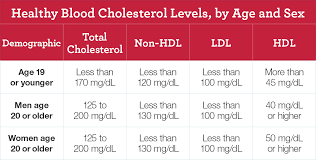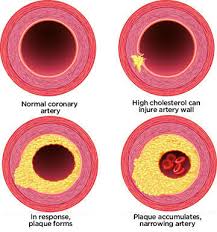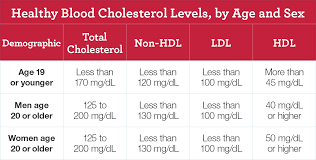by Chef K.T. Murphy
High Cholesterol 411
According to the National Consumers League, cholesterol is made by the liver. It’s a waxy substance that comes from the animal products in our diet, such as dairy products, fish, poultry, and other meats. It’s necessary to the body, as it is required to insulate nerves, as well as to make cell membranes, and for producing certain hormones. However, a high level of cholesterol is a bad thing. There is plenty of information across the internet with regards to cholesterol, but we’re going to break that down into digestible information. There are three common terms used when it comes to cholesterol: HDL, LDL, and Triglycerides.

We’ll define each of these terms and clear up some of the confusion.
• High Density Lipoproteins (HDL) – Think of this is the tool you would use to even up the spackle, when drywalling.
• Low Density Lipoproteins (LDL) – This is the spackle that will patch the hole in the wall.
• Triglycerides – Triglycerides are a type of fat, and they live in the blood. If your diet contains excessive amounts of fat that the body cannot use, the body stores it to be used as an energy source.
So, that’s the simplest way to explain it, but let’s take it into a bit more detail to see how it applies to our real lives.
The Details
• Cholesterol is vital to our every cell, especially our brains. For the average type of person (think of average as relatively fit to a tad overweight), there is no need to lower your levels artificially. A person who is given statins to lower their cholesterol may be on the medication for the rest of their lives.
• Low Density Lipoproteins has been associated with the thought that there’s no such thing as bad cholesterol. However, while some LDL is acceptable, excessive LDL is an issue. Inflammation creates small abrasions or tears in the artery’s inner wall, this allows blood to seep into the artery’s middle lining, creating further irritation. Now, LDL comes in as the spackle, to patch that weak spot. The issue is when LDL is instable, and rather than patching the weak spot, adheres to another area which is not required.
• High Density Lipoproteins is the tool that helps the Low Density Lipoproteins. Basically, it’s your spatula. Now, when people attempt rapid weight loss they choose radical diets. These radical diets may reduce the excess LDLs; however, this can result in too many patches loosening, and the body is unable to deal with the result. This is what results in blockages to the arteries, and the fine blood vessels that supply the brain.
• Triglycerides are the fats in your blood that your body uses for energy. They’re good for your health, however, high triglycerides will raise the risk of heart disease, and can also be a sign of metabolic syndrome. WebMD states that metabolic syndrome is a combination of high triglycerides, low HDL, high blood sugar, high blood pressure, as well as too much fat in the waist area. It increases the risk of stroke, diabetes, and heart disease.
A blood test can measure your triglycerides, as well as your cholesterol. A general acceptable level is as follows:
• Normal – under 140
• Borderline – between 150 and 199
• High – between 200 and 499
• Extremely high – 500 or higher
High triglycerides are as a result of poorly controlled diabetes, kidney disease, obesity, high levels of alcohol, kidney disease, as well as an under active thyroid.
There are also medicines that can raise your triglyceride level, including estrogen, steroids, diuretics, tamoxifen, beta-blockers, and more.

How To Lower High Triglycerides
• Limit alcohol intake, and stop smoking
• Limit sugars and animal fats in your diet EAT MORE GREEN
• Exercise regularly
Always Check with your doctor and build a team with a nutritionist
All the best
Chef Murph
Tags: Chef K.T. Murphy, chef keith murphy, chef murph, Chef Murph TV, Chef Murphy, Chinese, food, Foodist Networks, Global Fusion Americana, Recipes
